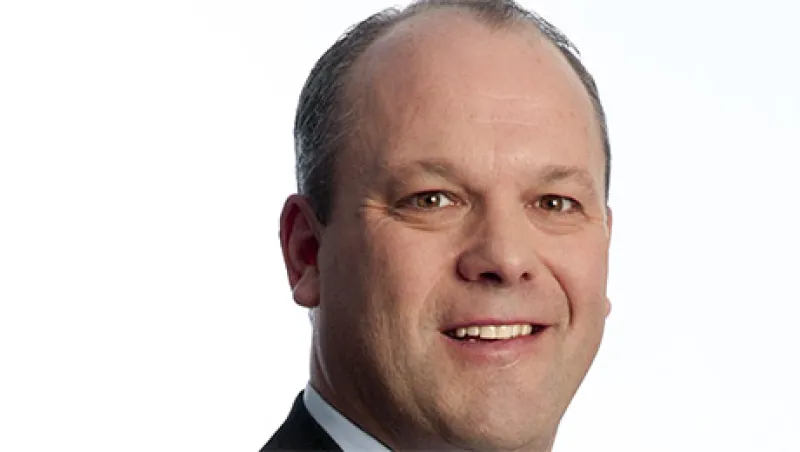The debate over whether actively managed exchange-traded funds should trade on a so-called nontransparent basis, like mutual funds do, recently took a dramatic turn. For now, the upper hand belongs to a new vehicle that falls somewhere between ETFs and mutual funds.
On October 21 the Securities and Exchange Commission surprised the industry by rejecting the nontransparent ETF structure proposed by Precidian Investments and backed by the New York Stock Exchange. But on November 6 the regulator announced its intent to approve investment firm Eaton Vance Corp.’s “exchange-traded managed fund” (ETMF) structure, which is marketed under the NextShares name and backed by the Nasdaq Stock Market.
Until then, Bedminster Township, New Jersey–based Precidian was seen as the front-runner in the race to introduce exchange-traded funds that only have to report portfolio holdings monthly or quarterly. Four ETF heavyweights had already licensed its structure, which relies on a blind trust and a new intraday pricing mechanism: BlackRock, Cohen & Steers, Invesco PowerShares and State Street Global Advisors, along with mutual fund sponsor American Funds.
Who has licensed Eaton Vance’s structure? No one yet, says Stephen Clarke, president of Navigate Fund Solutions, the subsidiary that $298 billion Eaton Vance set up to market the ETMF structure. But in the wake of the SEC announcement, “we are very busy right now, in conversations with fund companies,” Clarke says.
Boston-based Eaton Vance has 18 ETMFs in registration with the SEC, and chairman and CEO Thomas Faust has said that the firm is working toward a launch in the second quarter of 2015. In a November 13 address at the Bank of America Merrill Lynch Banking & Financial Services Conference in New York, he called NextShares “the next evolution of the fund industry.” The new vehicle has the potential to “do for active investing what ETFs have done for passive investing over the past 20 years,” Faust asserted.
Eaton Vance’s exemptive relief would apply not only to the 18 ETMFs in registration but also to any future funds, and will also allow ETMFs that operate as feeder funds in a master feeder structure, he noted. If other mutual fund firms abide by the terms of Eaton Vance’s order, the SEC will permit them to “piggyback” for fast-track approval of their own ETMFs, Faust said.
As for Precidian’s SEC application, it “isn’t a dead issue,” says chief officer Daniel McCabe. Precidian withdrew the application on November 14 but will be “refiling to be responsive to the issues raised by the SEC in short order,” he adds.
Currently ETFs must report holdings daily; because market makers know exactly what’s in an ETF’s portfolio, they can easily hedge their positions to keep the fund’s market price in line with its net asset value. In a statement explaining its rebuff of Precidian, the SEC said the firm’s proposed structure would “fall far short of providing a suitable alternative to the arbitrage activity in ETF shares that is crucial to helping keep the market price of current ETF shares at or close to the NAV per share of the ETF.”
By contrast, the Eaton Vance product doesn’t trade intraday. Like a mutual fund, it is priced only once daily, after the close. Investors pay the yet-to-be-determined NAV plus a trading cost, which might be a penny or two a share.
The two structures are “completely different,” notes Ben Johnson, a Chicago-based director at Morningstar who follows ETFs and the firms that sponsor them. “Precidian started with an ETF structure and made it look more like a mutual fund, while Eaton Vance started as a mutual fund and made it look more like an ETF,” Johnson says.
For Eaton Vance, explaining its variation on the nontransparency theme is no easy task, given that exchange-traded managed funds aren’t ETFs or mutual funds. “From very early on, they were warned by the SEC that they should not under any circumstances refer to this product as an ETF or as a mutual fund,” Johnson notes.
In his New York address Eaton Vance’s Faust described ETMFs as a new kind of open-end fund designed for active management. “Similar to an ETF, we will use an exchange-traded structure that has built-in cost and tax advantages that we think will translate into significant performance benefits relative to similarly managed mutual funds,” he said.
ETMFs don’t carry distribution and service, or 12b-1, fees, which cost the average actively managed mutual fund about 15 basis points annually between 2007 and 2013, according to an Eaton Vance study. Even for the institutional share class of mutual funds, which don’t carry 12b-1 fees, the study put transfer agency fees, flow-related trading costs and cash drag (the effect of uninvested cash on performance) at 61 basis points per year.
ETMFs’ pricing structure means that “market makers don’t have to take too much risk here,” says Chris Hempstead, head of ETF sales at market maker KCG Holdings of Jersey City, New Jersey. Hempstead also thinks “a lot” of actively managed mutual funds will want to add an ETMF because such funds are nontransparent, so they won’t have “to give up their secret sauce.”
But most important, the fact that ETMF managers won’t have to disclose their daily trading activities “allows us to avoid the risk of front-running and also protects the manager’s research insights from being disclosed to the marketplace,” according to Faust.
The Investment Company Act of 1940 lets open-ended mutual funds report their holdings quarterly with a 60-day lag, but most of them do so more often, says Navigate’s Clarke: “Many funds report monthly with a 30-day lag, and that’s what we anticipate most NextShares would do.”
ETMFs already have their skeptics. “The ETMF structure is strange to me in that it has a few more features than mutual funds, but much fewer features than ETFs,” Noah Hamman, founder and CEO of AdvisorShares Investments, told Institutional Investor by e-mail. Bethesda, Maryland–based AdvisorShares sponsors 26 actively managed and fully transparent ETFs with a combined $1.5 billion in assets.
“The whole point of the exchange is to bring two parties together to negotiate the price of a security and conduct a transaction. ETMFs do not do this,” Hamman wrote in a blog post. “I am a big believer in transparency, and based on the feedback I hear, investors and financial advisers are demanding it.”






